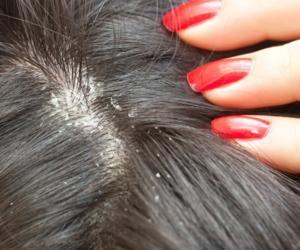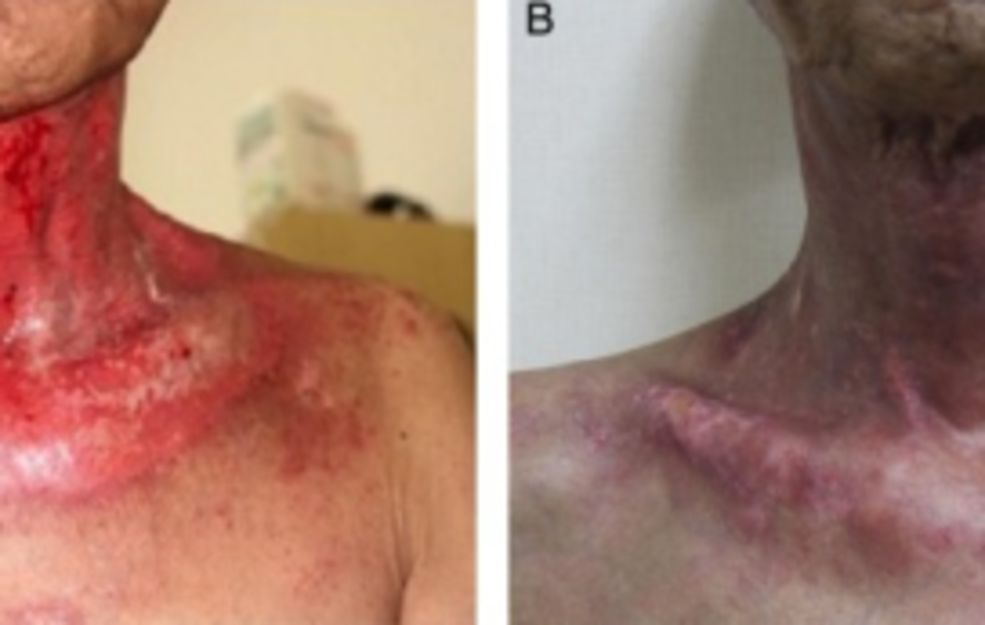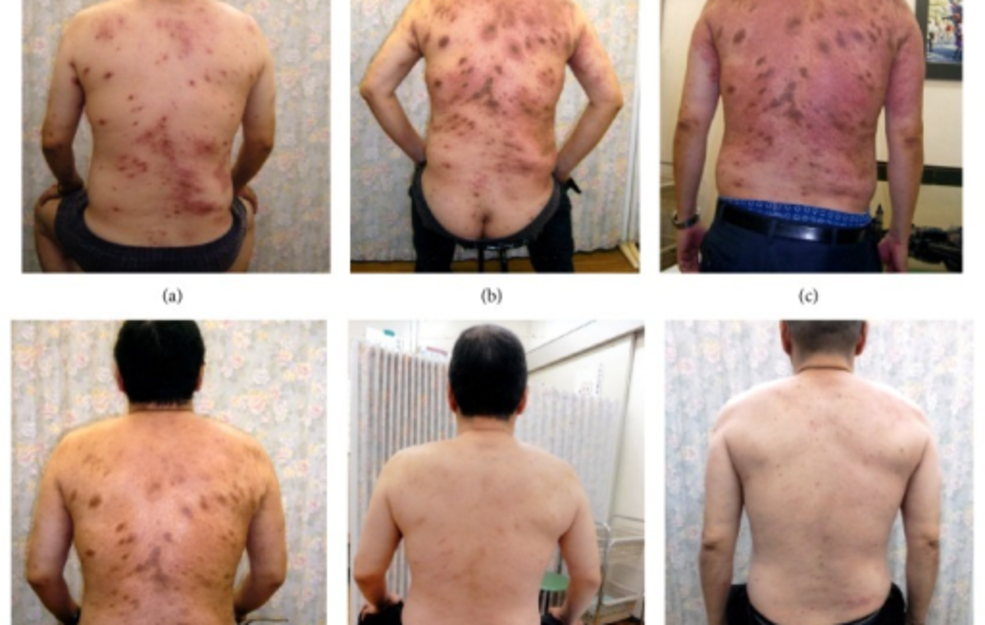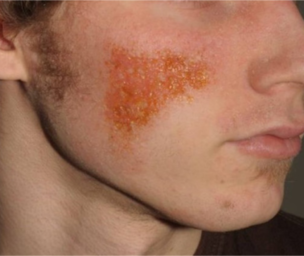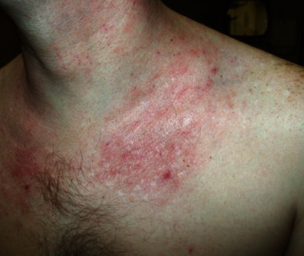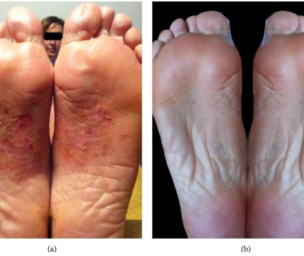What Is Seborrheic Dermatitis?
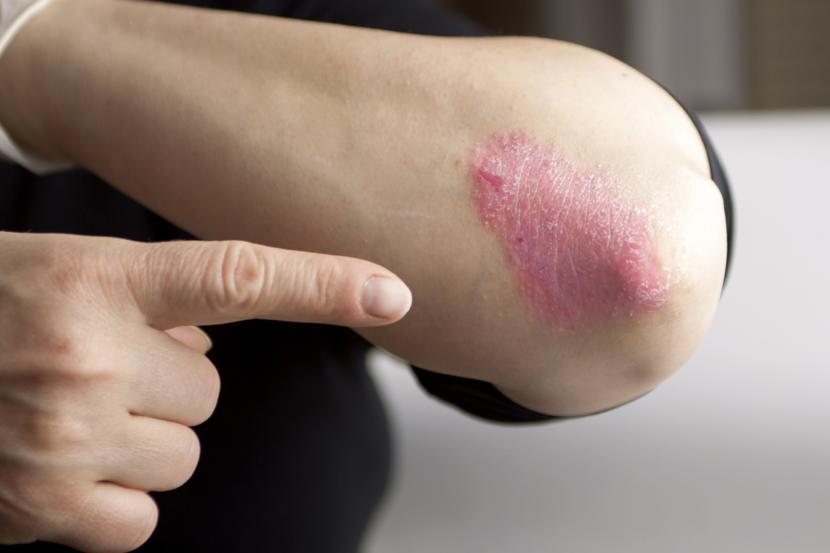
What is seborrheic dermatitis?
Seborrheic dermatitis, or seborrhea, is a common skin disease that has no known direct cause. It is characterized by a red, itchy rash on the skin, often on the scalp, with scaly patches that flake off. It looks similar to eczema, psoriasis or an allergic reaction. Common names for seborrheic dermatitis are dandruff and cradle cap. It may also be called seborrheic psoriasis or seborrheic eczema depending on the case.
People with seborrheic dermatitis face discomfort and the risk of embarrassment every day. But despite the way it seems, seborrheic dermatitis, which causes stubborn dandruff is not a reflection of someone’s personal hygiene. Some also assume that it’s an allergy. But this is definitely not the case. Although there is no direct cause known, several factors are considered to contribute to seborrheic dermatitis, including:
- Genes
- Stress
- Cold, dry weather, such as in spring and in winter
- Malassezia, a type of yeast or fungus, that is present in the oil secretion glands of the skin
Certain medical conditions can also increase your chances of getting seborrheic dermatitis. These conditions include:
- AIDS, cancer and other conditions that cause a weakened immune system
- Psoriasis
- Rosacea
- Scratching and other forms of skin damage
- Alcoholism
- Depression
- Eating disorder
- Epilepsy
- Parkinson’s Disease
- Heart attack
- Stroke
- Congestive heart failure
Between the two genders, men are more likely to develop seborrheic dermatitis. This is especially true for people with oily skin. In terms of age, newborns up to three months old and adults aged 30 to 60 are more prone to seborrheic dermatitis.
Babies often get cradle cap, which are crusty yellow or brown scales on the scalp. This usually goes away on its own, before babies turn one year old. However, for babies who experience seborrhea, the condition may recur when they reach adolescence and puberty. In babies, seborrhea may also be mistaken as diaper rash.
Although dandruff and cradle cap are often found in the scalp, seborrhea can also occur on the face — behind the ears, on the eyelids and around the nose. It can also show up in skin folds under the arms, on the legs, and under the breasts; in the middle of the chest, on the back, around the navel, in the groin and on the buttocks.
Seborrheic dermatitis symptoms
Seborrheic dermatitis looks very similar to other skin disorders so it may be difficult to identify. Some of its symptoms include:
- Itching or burning skin
- Reddened skin
- Redness or crusting of the eyelids
- Skin that flakes off, moist or oily, on the scalp — whether in the hair, eyebrow, beard or mustache area
- Patches of greasy skin, with flaky white or yellow crust, or scales — these can be found on the scalp, face, ears, chest, armpits, scrotum and other parts of the body
Diagnosing seborrheic dermatitis
If your condition persists despite attempts at self-care, it may be time to consult your doctor. Do not hesitate to approach a medical professional if your condition causes so much discomfort that it disrupts your daily routine and your sleep, if it causes you embarrassment, and/or if you suspect the skin might be infected.
Go to your family doctor or dermatologist. They will ask about your medical history and look at your skin. Because of their professional knowledge, they will be able to discern whether your condition is seborrheic dermatitis or another skin disease.
To help you prepare for the appointment, here are some questions your doctor may ask you.
- When did you first notice there was something wrong?
- Have you had these symptoms before?
- What are your symptoms and how have they progressed? Are they worse or sometimes better and sometimes worse?
- What at-home treatments have you tried? How often did you use them? Did they help?
- What medications, supplements or vitamins do you take?
- Have you been through major life changes lately or are you under tremendous stress?
If they suspect that your condition is related to another, the doctor may scrape off skin cells for a biopsy. This is to rule out similar conditions such as psoriasis, rosacea, and atopic dermatitis or eczema.
Can you prevent seborrheic dermatitis?
By maintaining a healthy lifestyle and taking good care of yourself, you should be able to reduce seborrheic dermatitis breakouts. Here are some tips on how to do that.
- Stay hydrated. Dehydrated skin is more prone to seborrhea flare-ups. Drink plenty of fluids, whether in the form of water or natural fruit and vegetable juices. Don’t forget to moisturize or to take extra care of your skin.
- Use gentle soaps. Most commercially marketed soaps today are too harsh for the skin. Use glycerin-based or natural organic soaps with herbs.
- Keep calm. Avoid stressful situations in your personal life and in the workplace. Keep your inner balance strong by practicing yoga or meditation. Psychological treatments will also prove beneficial, especially for people who have depression or anxiety.
- Maintain a balanced diet. Choose nutritious foods and take vitamins, especially vitamin B or particularly biotin. Watch how your food affects your condition. If there are certain foods that cause your symptoms to worsen, take note of those and try to avoid them to see if that will improve your condition.
- Be conscious about high environmental changes. Extreme heat or cold can worsen seborrhea symptoms. Whether it is air conditioning in summer or heating in winter, the environment affects the condition of your skin and can worsen your symptoms. Be wary of these changes and take preventive measures such as moisturizing more frequently or using natural treatments proactively.
Seborrheic dermatitis treatment
Seborrheic dermatitis often clears up on its own, without medication or home remedies. But more often than not, it is an issue that persists throughout a person’s life, in an endless cycle of flare-ups and clear-ups.
If this happens, fear not. You may be able to manage and control flare-ups before they get worse, by recognizing the symptoms and combining self-care practices and medications.
Here are some home remedies and self-care practices you can do to treat seborrheic dermatitis.
- Use anti-dandruff shampoos that contain one of these key ingredients: coal tar, ketoconazole, salicylic acid, selenium sulfide or zinc pyrithione. These shampoos may also be applied on the face, ears and chest. Just make sure to rinse them off completely.
- To soften thick patches of skin, rub mineral oil or olive oil on the area. After an hour, you can peel the scales off by brushing your hair gently with a hairbrush. Wash your hair thoroughly afterwards.
- Refrain from using products that contain alcohol. This can cause the disease to flare up.
- For afflictions on the skin, practice self-care by washing daily with soap and water. Avoid harsh soaps and apply a moisturizing lotion.
- Expose your skin to sunlight. This may help stop or slow the growth of yeast that causes seborrheic dermatitis. If possible, go out early in the day and avoid exposure to the harsh sun at noon.
- Try not to scratch or pick at the area. Once the skin is irritated or broken, infections can develop and complicate the condition further. Instead, apply hydrocortisone cream or calamine lotion to relieve itching temporarily.
- Wear breathable smooth-textured cotton clothing. By keeping air circulating around the skin, irritation can be reduced.
- If you have seborrheic dermatitis around your mustache or beard, consider shaving it off.
- For seborrhea on the eyelids, gently clean the area with baby shampoo and wipe away the flakes or scales with a cotton swab. You may also apply a warm compress.
For medications, here are some things that may ease and reduce seborrhea.
- Corticosteroid lotion, creams, shampoos and ointments like hydrocortisone, desonide (Desowen, Desonide), and fluocinolone — This is very effective but should be used only as prescribed. Prolonged use can cause side effects like thinning skin and skin showing lines or streaks.
- Anti-fungal ointments and other products
- Anti-itch creams
- Sulfur products
- Prescription-strength medicated shampoo
- Light therapy. This is a combination of psoralen and light therapy (photochemotherapy). Psoralen is taken orally or applied directly on the affected skin. Afterwards, the person is exposed to ultraviolet light. However, light therapy may not be effective for people with thick hair.
There are seborrheic dermatitis natural treatments available too.
- Honey. This natural remedy has both antibacterial and anti-fungal properties which effectively kill the yeast and microbes causing the disease. It also helps moisturize the skin and lock it in. For this treatment, mix four parts honey to one part boiling water. Apply on your skin and leave it to dry for three hours. Afterwards, rinse with warm water. You may see some improvement immediately after the first use.
- Fish Oil. These are rich in omega-3 fatty acids and these supplements are easily bought. There has been some evidence that shows this helps reduce the symptoms of seborrheic dermatitis. Take as indicated in the bottle.
- Coconut Oil. This contains two fungus-destroying fatty acids, lauric acid and caprylic acid. Take an amount of coconut oil that is enough to cover the affected area. If you are applying it on your scalp, half a teaspoon would be enough. Rub it between your hands until the oil liquefies. Massage it into your scalp or skin. Then cover your head with a shower cap or towel. Leave this on for two to three hours to loosen the scales and work on the fungi on the skin. Wash thoroughly afterwards.
- Aloe Vera. This is a great moisturizer and can help with seborrheic dermatitis. Use aloe cream twice a day.
- Apple Cider Vinegar. This contains malic acid, a strong acid that destroys the fungi and restores the natural acidic environment of the skin. Dilute the apple cider vinegar. Use one part vinegar and one part water. If your condition is severe, use one part vinegar and four parts water. Apply the solution to your scalp or skin and allow it to dry. Rinse it all off afterwards. The smell should fade within half an hour after you have dried off.
- Baking Soda. This is one of the easiest alternative treatments for seborrheic dermatitis because it is simple to use and is odor-free. While apple cider vinegar uses acidity to kill off fungi, baking soda uses alkalinity. Just mix half a teaspoon of baking soda with half a cup of water. Apply it on the skin and leave to dry. You can rinse this with water, or with apple cider vinegar dilution, as mentioned earlier.
- Tea Tree Oil. It has antibacterial and anti-fungal properties which make it an effective remedy for seborrheic dermatitis. This can be applied directly on the affected area. Mix 4 to 5 drops of tea tree essential oil in a teaspoon of a carrier oil, which could be either olive, coconut or sesame oil. Try this on a small patch of skin first to make sure it doesn’t irritate or worsen your condition. After allowing it to dry on the skin, rinse with cool water. Or, you can also add this to your shampoo and wash as usual.
Seborrheic dermatitis shampoo
For adults who wish to use shampoo to treat seborrheic dermatitis, they may try over-the-counter dandruff shampoos. Here are a few suggestions.
- Use an over-the-counter dandruff shampoo that contains pyrithione zinc (like Head & Shoulders) or selenium (Selsun Blue) daily.
- Shampoo with anti-fungal ketoconazole twice a week; alternate this with your regular everyday shampoo.
- Tar shampoos can also be effective. Examples of this are DHS Tar and Neutrogena T/Gel.
- Salicylic acid shampoos can also be used daily. A popular brand of this is Neutrogena T/Sal.
If you’ve tried one of these shampoos and found that it lost effectiveness over time, try switching between two types of shampoos. Make sure to read the label on the bottle and leave the shampoo on for the indicated length of time. This allows the ingredients to really work on the scalp.
On the other hand, for babies, just use warm water and baby shampoo daily. You can loosen and remove the scales with a soft-bristled brush. Do this before rinsing out the shampoo. If this doesn’t help, ask for a recommendation of medicated shampoo from your pediatrician. Using just any dandruff shampoo may irritate your baby’s scalp.
